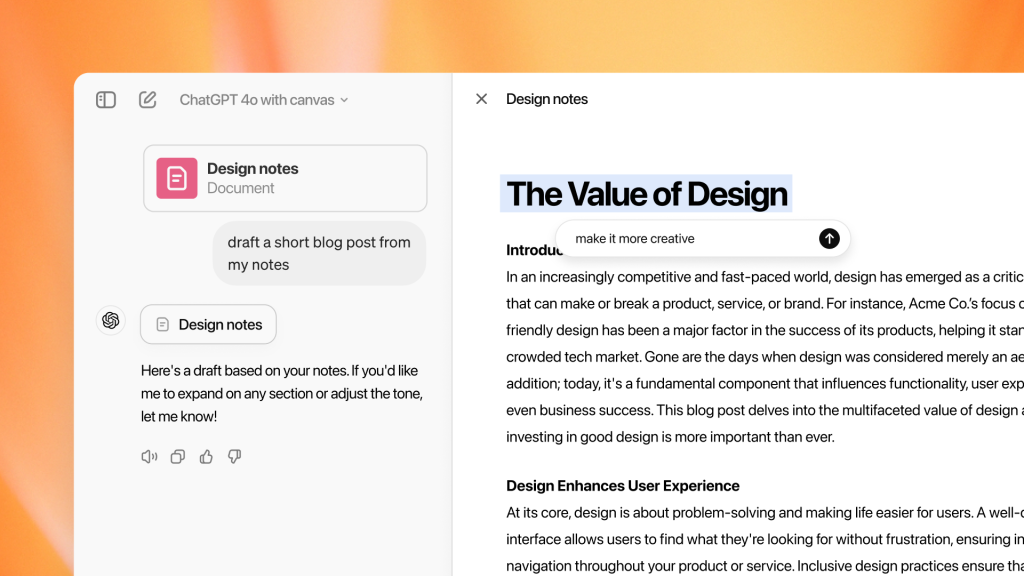OpenAI is changing up ChatGPT‘s interface to look more like a digital notepad for projects.
On Thursday, OpenAI announced a beta “canvas” feature for writing and coding. Canvas is different from the traditional chatbox interface, which makes it tedious to refine or develop ideas without the back and forth prompts.
“Although the [ChatGPT] interface is easy to use and works well for many tasks, it’s limited when you want to work on projects that require editing and revisions. Canvas offers a new interface for this kind of work,” the announcement said.
The new feature is ChatGPT’s first major design change since its launch in 2022. OpenAI has been busy doing other stuff, like launching multimodal model GPT-4o, reasoning model o1, and raising $6.6 billion in its latest investment round. According to reports from the New York Times, OpenAI told investors it plans to increase revenue from $3.7 billion this year to $11.6 billion by 2025. The updates to ChatGPT, such as making it more dynamic and user-friendly, could potentially help OpenAI meet its ambitious financial goals.
Credit: OpenAI
For now, Canvas is only available to paying subscribers, but OpenAI says it plans to expand access to non-paying users when it’s out of beta. If you’re a ChatGPT Plus or Teams user, you can select “ChatGPT 4o with Canvas” from the model dropdown and get to work. Access for Enterprise and Edu subscribers rolls out next week.
From here, all you need to do is enter a prompt related to writing or coding and it will activate Canvas by opening a new window. Per OpenAI’s announcement, ChatGPT has been trained to recognize certain prompts that trigger canvas. For writing help, users can highlight specific parts of the text and click “ask ChatGPT” to edit or ask certain questions about the highlighted text.
There are also shortcuts found in the lower lefthand corner for suggesting edits, shortening the length, changing the reading level, polishing for grammar, and adding emoji. The ChatGPT format remains in a left sidebar in case you want to keep the conversation going.
Credit: OpenAI
For coding, Canvas works in a similar way, by recognizing coding-related prompts that trigger a new window. Shortcuts include: Review code, Add logs, Add comments, Fix bugs, and Port to a language by translating your code into a different programming language (i.e., JavaScript, TypeScript, Python, Java, C++, or PHP).
If you made a mistake, you can hit the back button and revert to the previous version. When you’re finished working, simply close the window, and you’ll find yourself back in the normal ChatGPT interface. To find the project again, just click on the module saved in your chat history.





